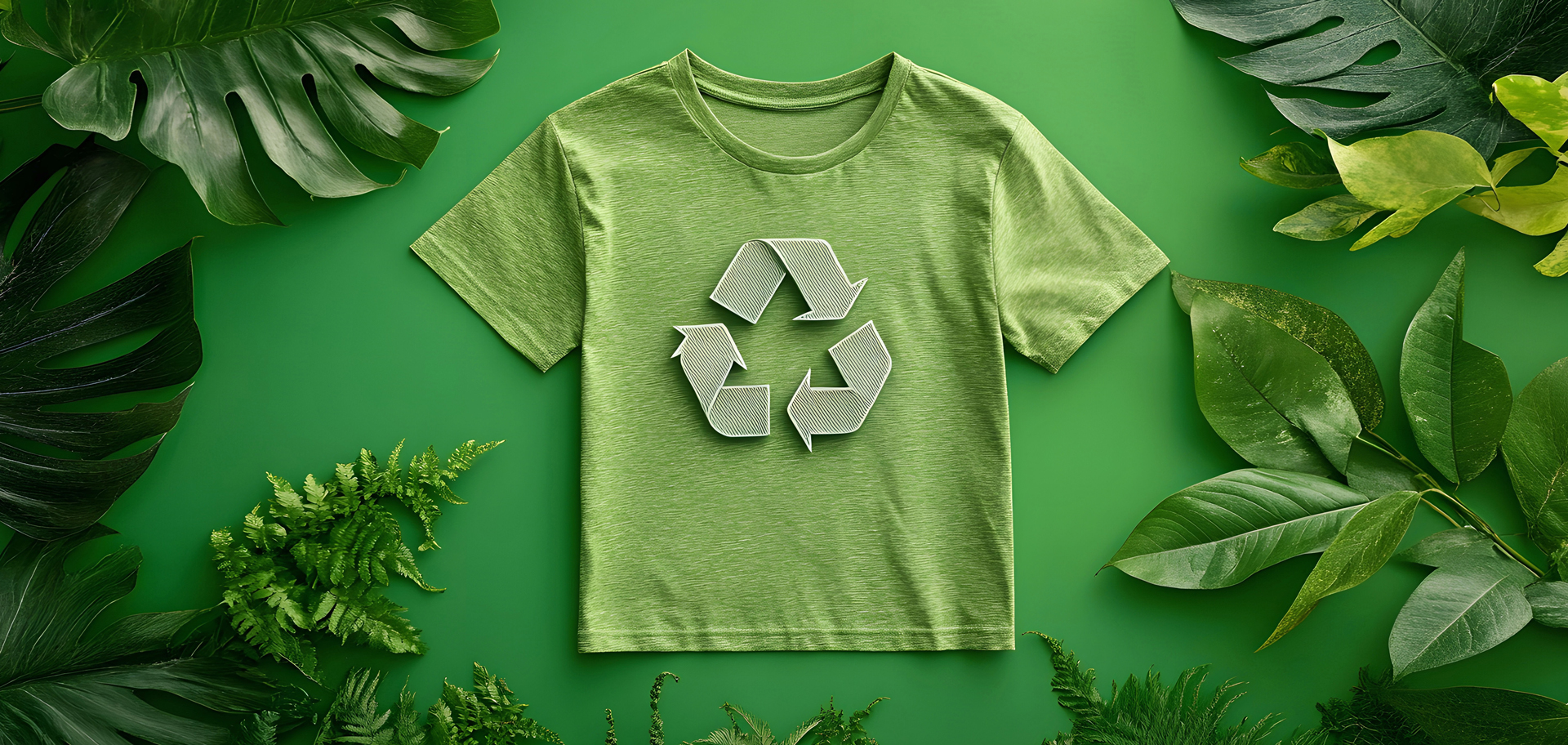
Experts are calling for a shake-up of how we deal with the growing fashion-waste issue. While the recycling and resale of textiles is a good start, we need to engage in other business models, too.
Chances are that at some point during the end-of-the-year holiday season, you received at least one item of clothing as a gift. Receiving garments as presents is often ideal, since apparel can provide you with high-quality, stylish items that make you feel and look good; fill a practical need; or even bestow a memorable experience.
A problem enters the picture, though, when we discard too quickly the clothes we accumulate. Although donating them before they reach the end of their usefulness might seem like a good solution for those items that we no longer want, most donated clothing is thrown away or exported.
But what if we could purchase clothing made of natural fabrics that would counter rising temperatures in urban areas around the world, caused by asphalt, buildings and concrete? Now, one group of researchers has created a material treated with a chalk-based coating that keeps the air underneath it up to 15 degrees Fahrenheit cooler in warmer urban environments.
Would such attire entice us to hang on to our clothing longer and thus help alleviate the growing fashion-waste issue?

Charity shops handle a large amount of used clothes. Unfortunately, many donated items are of poor quality, and there’s little financial benefit to managing them locally. Instead, charities trade some valuable items and discard or export the rest.
A need for a fashion-waste shake-up
According to researchers from the Royal Melbourne Institute of Technology (RMIT) University in Australia, global textile waste each year weighs 92 million tons, and this could double by 2030. So, in a first-of-its-kind study, RMIT scientists analyzed what happens to clothes and other textiles after consumers in Amsterdam, Austin, Berlin, Geneva, Luxembourg, Manchester, Melbourne, Oslo and Toronto no longer want them.
Results showed that overconsumption and oversupply were the main drivers of the cities’ textile waste, causing the export of between 33% (Australia) and 97% (Norway) of donated clothes. Charity shops, the study found, handled a large amount of the used clothes; but because many of the items were of poor quality and there’s little financial benefit to manage them locally, charities traded some of the valuable items and discarded or exported the rest.
In Melbourne, for example, charities exported high-quality (often vintage), secondhand clothes to Europe, forcing the city’s independent resale businesses to import similar apparel back from Europe or the United States. But overall, charities and collectors have been reporting the plummeting quality of garments over the past 15 to 20 years, decreasing the resale potential.

We need to expand the life of textiles by going beyond direct resale in secondhand shops. One way to do that is by using repair centers more.
Publishing their findings in the journal Nature Cities in October 2024, the RMIT scientists write that charities and local governments need to coordinate more to manage textile waste. While in the past charities have been able to do the heavy lifting, their operations are ill-equipped to deal with the recent volume of used textiles that need to be recycled or reused. Given the role of charities within communities, it’s essential that they expand beyond direct resale in secondhand shops and explore other business models, such as repair centers and swapping.
Most local governments in the cities studied did not get involved in textile waste beyond providing licenses and public spaces for charity bins and commercial resellers, which indicates the lack of incentives and mechanisms to drive genuine, systemic change. In cities like Melbourne, local governments send dumped textiles directly to landfills, instead of diverting them to recycling or reuse facilities or other local alternatives.
Amsterdam, though, was the opposite; its municipality manages collection and sorting of unwanted clothes and encourages collection of all textiles, including nonreusable ones. Beginning in January 2025, all European Union member states must establish separate collection systems for used textiles. But the biggest per capita discarders of textile waste, Australia and the U.S., have no such regulations.

Swapping pre-loved clothes has several advantages: it keeps clothes in use and out of landfills, reduces greenhouse gas emissions in the production of new materials and updates wardrobes.
The researchers say it’s important to incentivize the promotion of local alternatives to fast fashion, including repairing, reselling and swapping. Unfortunately, those alternatives are underpromoted, despite their potential to significantly reduce cities’ textile waste.
To create more space for these alternatives, the RMIT scientists are calling for a ban on fashion advertising in cities. Sustainable fashion initiatives, such as secondhand retailers, struggle to compete with fashion brands’ big marketing budgets and convenient locations. A ban on fashion advertisements would provide more space to promote more sustainable alternatives. In fact, France recently introduced a ban on advertising ultrafast fashion, with each item to carry a penalty of up to 10 euros ($11) by 2030.
A market for climate-change-combating clothes
But what if our clothes did double duty? What if in addition to keeping us fashionable, they helped combat climate change by keeping us cool? Would we be as quick to throw our clothing items out?

Some are calling for a ban on fashion advertising in cities to create more momentum for textile-waste alternatives.
As heat waves become more prominent, cooling textiles that can be incorporated into hats, dresses, shirts, shoes and even building surfaces provide a glimpse into a future where greenhouse-gas-emitting air conditioners may no longer be needed in our cities.
Engineers from Zhengzhou University in China and the University of South Australia in Adelaide say they have created a wearable fabric that is designed to reflect sunlight and allow heat to escape, while blocking the sun’s rays and lowering the temperature. The fabric promises to bring relief to millions of city dwellers experiencing warmer and more uncomfortable temperatures caused by global climate change and fewer green spaces.
Describing the fabric in the November 2024 issue of the journal Science Bulletin, the researchers say it leverages the principle of radiative cooling, a natural process where materials emit heat into the atmosphere and ultimately into space. Unlike conventional fabrics that retain heat, this one is made of three layers that are engineered to optimize cooling.

Millions of city dwellers are experiencing warmer and more uncomfortable temperatures, caused by anthropomorphic, global climate change.
The upper layer, made of polymethyl pentene fibers, allows heat to radiate effectively. The middle layer, composed of silver nanowires, enhances the fabric’s reflectivity, preventing additional heat from reaching the body. The bottom layer, made of wool, directs heat away from the skin, ensuring that wearers remain cool, even in the hottest urban environments.
In experiments, the engineers found that their fabric, when placed vertically, was 4.1 degrees Fahrenheit cooler than traditional textiles; and, when used horizontally, up to 11.1 degrees Fahrenheit cooler than the surrounding environment. They believe the fabric’s ability to passively reduce temperatures offers a sustainable alternative to conventional air-conditioning, providing energy savings and reducing the strain on power grids during heat waves. This technology, write the engineers, not only addresses the immediate problem of urban heat islands, but also contributes to the broader efforts to mitigate climate change and move towards more sustainable urban living.
While the fabric holds significant promise, the current production process is costly; and the long-term durability of the material needs further investigation before it can be commercialized. But the researchers hope that the technology can eventually be adapted for even broader applications, such as in construction materials, outdoor furniture and urban planning scenarios.

A new, chalk-coated fabric kept temperatures an average of 6 degrees Fahrenheit below the ambient air temperature in an open grass field.
A future for cooling, chalk-coated couture
There’s yet another fabric type that’s showing great potential for keeping us cool. In the October 2024 journal ACS Applied Materials and Interfaces, scientists from the American Chemical Society—with support from the College of Natural Sciences at the University of Massachusetts Amherst—report on tests of a polyester fabric treated with a chalk-based coating that kept people up to 15 degrees Fahrenheit cooler in hot urban environments than untreated polyester.
The scientists tested the material in four, outdoor, urban settings, including areas with materials that absorb and emit the sun’s heat. The observations made during these hot, cloudless days indicate that the treated polyester cooled the air underneath the fabric, regardless of the environment:
• in an open grass field—an average of 6 degrees Fahrenheit below the ambient air temperature.
• in a concrete-paved alley between buildings—an average of 3 degrees Fahrenheit below the ambient air temperature.
• on an asphalt-paved parking lot—an average of 1 degree Fahrenheit below the ambient air temperature.
• on an open concrete veranda—an average of 3 degrees Fahrenheit below the ambient air temperature.

I have several hand-me-down items in my clothes closet; items my mom or sisters used to wear that fill me with warm memories.
The researchers conclude that their results demonstrate that their coated fabric could provide energy-free cooling for cyclists and pedestrians in urban environments.
A liking for warm-feeling wear
I have to admit that I like clothes—and shopping for them. For me, clothing is a means of personal expression. I have several hand-me-downs in my closet, too; items my mom or sisters used to wear that fill me with warm memories.
Now, if next to those emotionally charged, older garments I could hang newer items that would keep me comfortable and cool in our ever-hotter summers, I know what I’ll be wishing for next Christmas.
Here’s to finding your true places and natural habitats,
Candy


























